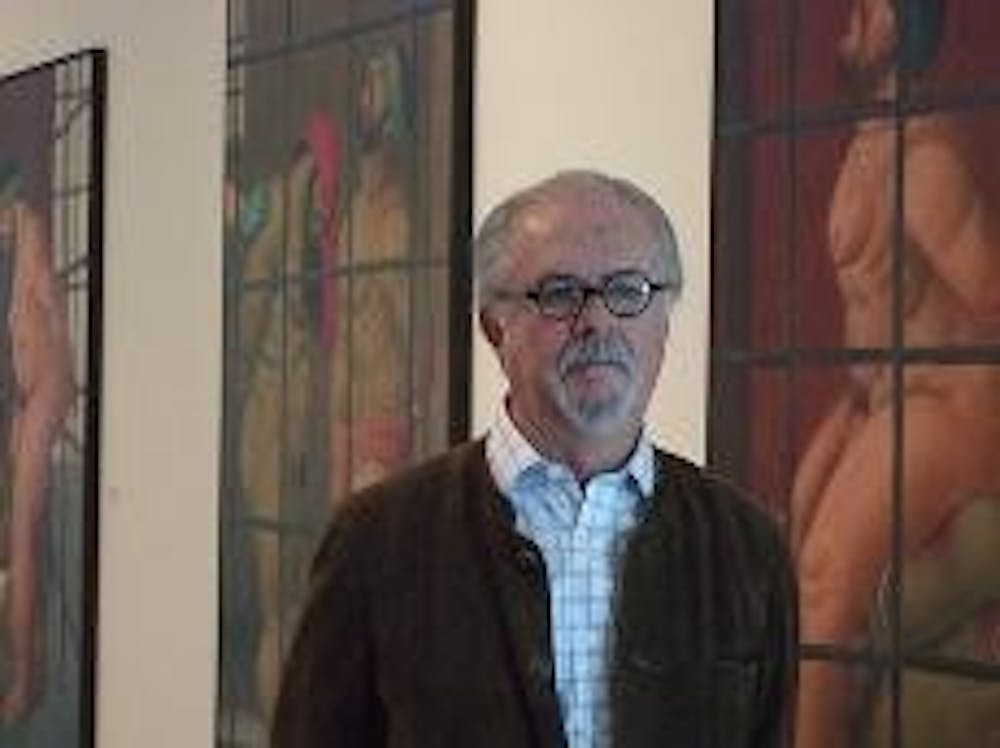The American University Museum at the Katzen Arts Center confronts viewers with three moving art exhibits that question the practice of human actions in war, society and the women's movement. At the museum, the "ART of CONFRONTation" exhibit features "Fernando Botero: Abu Ghraib," "Dark Metropolis: Irving Norman's Social Realism" and "Claiming Space: Feminist Originators."
On the opening night of the exhibit, the museum was packed. A total of 1,350 people attended the opening, which was 400 more than usual, according to the museum's director and curator, Jack Rasmussen. The galleries were filled with students, patrons, artists, volunteers and Dr. Cyrus Katzen himself. Two women from Colombia even flew to D.C. in hopes of meeting Botero.
The first comprehensive showing of all of Botero's work on Abu Ghraib can be found on the third floor of the museum. The series of paintings make the subject of torture at the Iraqi prison come alive. The graphic subject matter of torture works well with Botero's signature style of seemingly swollen figures. In a discussion with Botero earlier on Tuesday, the artist cited Giotto, Peter Paul Rubens and Titian as inspiration. He said painting his figures any other way would disrespect more than 600 years of masterpieces that focus on depth and form. As when examining the work of cubists like Pablo Picasso and Georges Braque, the viewer almost feels as if he or she looks at more than one view of a subject.
In this series, the disgraceful actions of humankind overwhelm the viewer. Carefully rendered details, such as blood and dirty toenails, provoke the observer to indignation. The monotone color scheme in the 39 drawings and watercolor sketches set in opposition to vivid details, like drips of red blood and streams of yellow urine, make the indignity of the images stand out even more.
The entire series consists of disturbing compositions, expressions of pain and shouts of anger that echo through the gallery.
"Art has the capacity to remind people of something," Botero said.
He said he spent 10 months cathartically creating the pieces in the exhibit in one of the most prolific periods of his lifetime. The 79 works included in the exhibit were a type of therapy for the artist.
The exhibit's message is universal, affecting people from every walk of life. Barron John Weyerhaeuser, a senior in the School of Public Affairs, enjoyed seeing the art and the crowd at the opening.
"I am so pleased that American University is attracting artists of that caliber and international renown," Weyerhaeuser said.
On the second floor, Irving Norman's social work can be found. Norman's work highlights the struggle people experience by living in society. Norman's dark palette uses shades of purple to help express the difficulties of war and the inequities of capitalism. Blacklisted by the FBI for his communist beliefs, Norman painted for himself and not clients or galleries during his lifetime.
Finally, powerful feminist pieces claim the first floor. The bright colors of the works invite viewers to think about and question the various issues surrounding the feminist movement. Media represented include photography, textile, painting and multimedia.
Influential feminist artists Miriam Schapiro, Faith Ringgold, Judy Chicago and Yolanda Lopez all have works featured in this comprehensive exhibit. Schapiro's 52-foot masterpiece "Anatomy of a Kimono" is an impressive component of this collection. This section was co-curated by Norma Broude and Mary D. Garrard, both AU professors.
All three exhibits are significant in their own right but equally address the problem of inequality. Liza Key, a graduate student in art history in the College of Arts and Sciences, said she was impressed with the "Claiming Space" exhibit, finding it to be an important thematic display of feminist art.
"It's an interesting juxtaposition with the Botero," Key said.
All three exhibits confronted Rasmussen in different ways. Rasmussen was persistent in getting Botero's work at AU for about a year and a half after Botero first exhibited a selection of his Abu Ghraib paintings at the Marlborough Gallery in New York. At the time, the topic of Abu Ghraib was current. After contacting Marlborough Gallery for about month, Rasmussen found luck visiting Miami. While in Miami, he met Botero's personal representative, and from there, the exhibit at AU was born.
Rasmussen has already received three upset phone calls about the controversial exhibit, and Botero said previous showings of the paintings have elicited hate mail. Rasmussen said that controversial art is not something that most institutions agree to show.
"This exhibit is rocking the boat," he said.
Even though the exhibits are confrontational, Rasmussen said all three were "not political. It's about human action, not to let people deceive themselves."
"ART of CONFRONTation" runs until Dec. 30 at the AU Museum. Admission is free. Museum hours are from 11 a.m. to 4 p.m. Tuesday through Sunday.
Eagle Staff Writer Kristen Powell contributed to this report.





